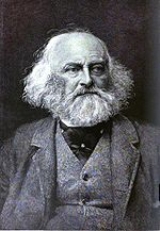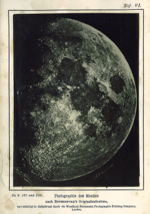
Lewis Morris Rutherfurd
Encyclopedia
Lewis Morris Rutherfurd was an American
lawyer
and astronomer
, and a pioneering astrophotographer.
John Rutherfurd
and great-grandson of Lewis Morris
, the Signer of the Declaration of Independence
. He graduated from Williams College
, Massachusetts
in 1834, then practiced law beginning in 1837 with William H. Steward in Auburn, New York
. He was admitted to the bar in 1837. On July 22, 1841 he married Margaret Chanler. Their son Stuyvesant Rutherford was born in 1842.
Lewis Rutherfurd abandoned his study of law in 1849 to dedicate his leisure to science
, particularly astronomy
. He performed pioneering work in spectral analysis
, and experimented with celestial photography
. He invented instruments for his studies, including the micrometer for measuring photographs, a machine for producing improved ruled diffraction grating
s, and the first telescope designed specifically for astrophotography
.
Using his instrumentation, Rutherfurd produced a quality collection of photographs of the Sun, Moon, and planets, as well as star clusters and stars down to the fifth magnitude. In 1862 he began making spectroscopic studies using his new diffraction grating. He noticed distinct categories of spectral classes of stars, which Angelo Secchi
expanded upon in 1867 to list a set of four stellar classes.
Rutherfurd served as a trustee of the Columbia University
from 1858 until 1884, and donated his photographs to that institution. In 1884 he was named as one of the delegates to the International Meridian Conference
. He was one of the original members of the National Academy of Sciences
created in 1863, and was an associate of the Royal Astronomical Society
.
In 1887 his health began to fail.
Richard Proctor, the greatest popularizer of astronomy in the nineteenth century, called Rutherfurd "the greatest lunar photographer of the age."

United States
The United States of America is a federal constitutional republic comprising fifty states and a federal district...
lawyer
Lawyer
A lawyer, according to Black's Law Dictionary, is "a person learned in the law; as an attorney, counsel or solicitor; a person who is practicing law." Law is the system of rules of conduct established by the sovereign government of a society to correct wrongs, maintain the stability of political...
and astronomer
Astronomer
An astronomer is a scientist who studies celestial bodies such as planets, stars and galaxies.Historically, astronomy was more concerned with the classification and description of phenomena in the sky, while astrophysics attempted to explain these phenomena and the differences between them using...
, and a pioneering astrophotographer.
Life and work
Rutherfurd was born in Morrisania, New York to Robert Walter Rutherfurd and Sabina Morris, and was the grandson of U.S. SenatorUnited States Senate
The United States Senate is the upper house of the bicameral legislature of the United States, and together with the United States House of Representatives comprises the United States Congress. The composition and powers of the Senate are established in Article One of the U.S. Constitution. Each...
John Rutherfurd
John Rutherfurd
John Rutherfurd was an American politician and land surveyor.John Rutherfurd was born in New York City. His parents were Walter and Mary Rutherfurd. Walter was a veteran of the British Army, and was a hostage of Patriots during the Revolutionary War while John was a teenager. Walter died in 1804...
and great-grandson of Lewis Morris
Lewis Morris
Lewis Morris was an American landowner and developer from Morrisania, New York. He signed the U.S. Declaration of Independence as a delegate to the Continental Congress for New York....
, the Signer of the Declaration of Independence
United States Declaration of Independence
The Declaration of Independence was a statement adopted by the Continental Congress on July 4, 1776, which announced that the thirteen American colonies then at war with Great Britain regarded themselves as independent states, and no longer a part of the British Empire. John Adams put forth a...
. He graduated from Williams College
Williams College
Williams College is a private liberal arts college located in Williamstown, Massachusetts, United States. It was established in 1793 with funds from the estate of Ephraim Williams. Originally a men's college, Williams became co-educational in 1970. Fraternities were also phased out during this...
, Massachusetts
Massachusetts
The Commonwealth of Massachusetts is a state in the New England region of the northeastern United States of America. It is bordered by Rhode Island and Connecticut to the south, New York to the west, and Vermont and New Hampshire to the north; at its east lies the Atlantic Ocean. As of the 2010...
in 1834, then practiced law beginning in 1837 with William H. Steward in Auburn, New York
Auburn, New York
Auburn is a city in Cayuga County, New York, United States of America. As of the 2010 census, the city had a population of 27,687...
. He was admitted to the bar in 1837. On July 22, 1841 he married Margaret Chanler. Their son Stuyvesant Rutherford was born in 1842.
Lewis Rutherfurd abandoned his study of law in 1849 to dedicate his leisure to science
Science
Science is a systematic enterprise that builds and organizes knowledge in the form of testable explanations and predictions about the universe...
, particularly astronomy
Astronomy
Astronomy is a natural science that deals with the study of celestial objects and phenomena that originate outside the atmosphere of Earth...
. He performed pioneering work in spectral analysis
Spectral analysis
Spectral analysis or Spectrum analysis may refer to:* Spectrum analysis in chemistry and physics, a method of analyzing the chemical properties of matter from bands in their visible spectrum...
, and experimented with celestial photography
Photography
Photography is the art, science and practice of creating durable images by recording light or other electromagnetic radiation, either electronically by means of an image sensor or chemically by means of a light-sensitive material such as photographic film...
. He invented instruments for his studies, including the micrometer for measuring photographs, a machine for producing improved ruled diffraction grating
Diffraction grating
In optics, a diffraction grating is an optical component with a periodic structure, which splits and diffracts light into several beams travelling in different directions. The directions of these beams depend on the spacing of the grating and the wavelength of the light so that the grating acts as...
s, and the first telescope designed specifically for astrophotography
Astrophotography
Astrophotography is a specialized type of photography that entails recording images of astronomical objects and large areas of the night sky. The first photographs of an astronomical object were taken in the 1840s, but it was not until the late 19th century that advances in technology allowed for...
.
Using his instrumentation, Rutherfurd produced a quality collection of photographs of the Sun, Moon, and planets, as well as star clusters and stars down to the fifth magnitude. In 1862 he began making spectroscopic studies using his new diffraction grating. He noticed distinct categories of spectral classes of stars, which Angelo Secchi
Angelo Secchi
-External links:...
expanded upon in 1867 to list a set of four stellar classes.
Rutherfurd served as a trustee of the Columbia University
Columbia University
Columbia University in the City of New York is a private, Ivy League university in Manhattan, New York City. Columbia is the oldest institution of higher learning in the state of New York, the fifth oldest in the United States, and one of the country's nine Colonial Colleges founded before the...
from 1858 until 1884, and donated his photographs to that institution. In 1884 he was named as one of the delegates to the International Meridian Conference
International Meridian Conference
The International Meridian Conference was a conference held in October 1884 in Washington, D.C., in the United States to determine the Prime Meridian of the world. The conference was held at the request of U.S. President Chester A...
. He was one of the original members of the National Academy of Sciences
United States National Academy of Sciences
The National Academy of Sciences is a corporation in the United States whose members serve pro bono as "advisers to the nation on science, engineering, and medicine." As a national academy, new members of the organization are elected annually by current members, based on their distinguished and...
created in 1863, and was an associate of the Royal Astronomical Society
Royal Astronomical Society
The Royal Astronomical Society is a learned society that began as the Astronomical Society of London in 1820 to support astronomical research . It became the Royal Astronomical Society in 1831 on receiving its Royal Charter from William IV...
.
In 1887 his health began to fail.
Richard Proctor, the greatest popularizer of astronomy in the nineteenth century, called Rutherfurd "the greatest lunar photographer of the age."
Awards and honors

- The lunarMoonThe Moon is Earth's only known natural satellite,There are a number of near-Earth asteroids including 3753 Cruithne that are co-orbital with Earth: their orbits bring them close to Earth for periods of time but then alter in the long term . These are quasi-satellites and not true moons. For more...
crater RutherfurdRutherfurd (crater)Rutherfurd is a lunar impact crater located entirely within the southern rim of the much larger crater Clavius. The crater Porter is located to the north-northeast of Rutherfurd, on the northeastern rim of Clavius. Rutherfurd forms the larger member in an arcing chain of craters of decreasing size...
is named after him.
- A professorship in Columbia UniversityColumbia UniversityColumbia University in the City of New York is a private, Ivy League university in Manhattan, New York City. Columbia is the oldest institution of higher learning in the state of New York, the fifth oldest in the United States, and one of the country's nine Colonial Colleges founded before the...
's astronomy department is named in his honor, as is the astronomical observatory atop Columbia's famed Pupin HallPupin HallPupin Physics Laboratories, also known as Pupin Hall is home to the physics and astronomy departments of the Columbia University in New York City and a National Historic Landmark...
.
Further reading
- Guide to the John Rutherford Papers, 1726–1835, New York Historical Society.

